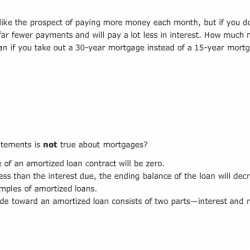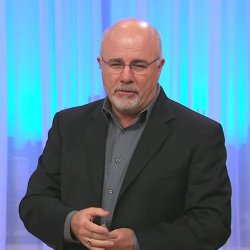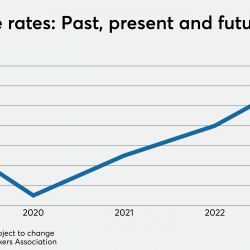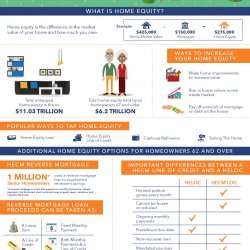the 7minute rule for what are brea loans in mortgages

Your regular monthly costs will likely be higher, because you'll handle a bigger loan (likely at a higher interest rate) and, most of the times, incur the expense of home loan insurance. Paying more up front may cost you much less in the long run. Ensure your spending plan accounts for those higher monthly expenses in addition to your other financial goals and obligations as well as how those expenses might alter the worth you can recoup if you choose to relocate a few years. A down payment is a Get more info common cost when purchasing a home. Still, more than a 3rd of Americans overstate the minimum deposit needed to get approved for a home loan, according to research study from Fannie Mae. Your down payment is a swelling sum of cash paid in advance when you close your home mortgage.
Whatever you do not cover with your deposit, you'll finance through your lending institution. Whether you're having difficulty conserving for a huge deposit or sitting on a mound of cash and you're reluctant to put all your eggs in one home loan basket, we'll cover everything you require to understand about just how much to put down on a house.
Various loan programs require different down payment percentages, however it's possible to get a home mortgage with just 3% down. The average down payment for a home is 13%, according to the National Association of REALTORS. Let's have a look at several deposit percentages and equate them into dollar quantities.
It likewise impacts: Your home loan rates of interest What kind of mortgage program is best for you Whether you'll pay for home loan insurance The more cash you put down, the much better. Your monthly mortgage payment will be lower because you're funding less of the home's purchase price, and you can possibly get a lower home loan rate.
You'll likewise have closing costs, which can range from 2-5% of the home price. So on a $250,000 home, your closing costs could be $5,000 or more. There's likewise your emergency situation fund that requires to remain intact after your house purchase – how does chapter 13 work with mortgages. Goal to have 3 to six months' worth of living costs conserved.
The 20% deposit rule originates from standards set by Fannie Mae and Freddie Mac, 2 significant home loan agencies backed by the federal government that buy and ensure the majority of the home mortgages made in the U.S. When it comes to a $250,000 house, a 20% down payment would be $50,000.
The 8-Minute Rule for How Is Lending Tree For Mortgages
PMI is normally paid monthly as part of your mortgage payment. A 20% down payment is considered the gold requirement, and there are some pretty convincing arguments for putting down that portion of change – what are interest rates today on mortgages. When you make a 20% deposit, you prevent paying PMI, which would've been included to your regular monthly mortgage payment.
A larger deposit indicates you'll borrow less and have a smaller sized, more inexpensive month-to-month home loan payment. You may likewise be eligible for a lower rate of interest. Lenders often charge less interest for a loan with 20% down than they would for a loan with a smaller down payment. Throughout a 30-year loan, a lower interest rate can conserve you thousands of dollars, depending upon how much you obtain.
Although having equity in the home is an advantage, if you experience a job loss or another monetary event that leaves you needing Check over here money, it's difficult to get your money back without borrowing against your equity or offering your house. People tend to think about purchasing a house as a financial investment.
If you put 20% down and your home's value drops, you might end up without any equity in your house when you're ready to refinance or offer. Although 20% is typically suggested as an ideal down payment quantity, you have the alternative to put down more. However if you have that type of cash offered, does that indicate you should do it? The advantage of a larger down payment is that you'll begin out with a substantial quantity of equity and you avoid PMI.
But before you empty your savings account, consider the prospective downsides to making a bigger deposit: Putting all your cost savings toward a down payment may not leave you any money in case of an emergency situation. Task loss, severe medical issues, substantial home repair work and other financial surprises might happen before you've had time to restore your emergency situation fund.
There are typically compromises with competing monetary objectives when you're conserving up a large down payment quantity. To come up with a deposit larger than 20%, you may have forgone or cut down on adding to your 401( k). Or maybe you have existing credit card financial obligation or other loans you have not been settling strongly since you were conserving for a deposit.
Not known Incorrect Statements About How Is Lending Tree For Mortgages
Among the finest ways to fully understand how your down payment affects your home purchase is to run the numbers. Let's have a look at two buyers who are borrowing standard loans, each with outstanding credit history. They're both buying a house valued at $250,000 on a 30-year, fixed-rate home http://cristianglum228.wpsuo.com/about-how-many-mortgages-are-backed-by-the-us-government mortgage.
75% rates of interest. Steve is putting down 5% and gets a 4% rates of interest. House cost $250,000 $250,000 Deposit $50,000 $12,500 Mortgage quantity $200,000 $237,500 Rate of interest 3. 75% 4% Regular monthly home mortgage payment( Principal and interest) $926. 23 $1,133. 86 Monthly PMI payment $0 $123. 70 Overall interest paid over thirty years $133,443.

08 Overall PMI paid up until 80% LTV $0 $11,875. 20 * * Estimate based upon PMI removal after 8 years of payments. In this example, Kate had the ability to save almost $50,000 ($ 37,246. 85 in interest and $11,875. 20 in personal home loan insurance coverage payments) throughout a 30-year loan by putting 20% down.
Once you reach 20% equity, which suggests you have an 80% loan-to-value (LTV) ratio, you can ask for that your lender get rid of PMI from your loan. Otherwise, PMI will be automatically canceled when you construct 22% equity (78% LTV ratio) (what debt ratio is acceptable for mortgages). FHA home mortgage debtors have something similar to PMI called a home loan insurance coverage premium (MIP).






Ingen kommentarer endnu